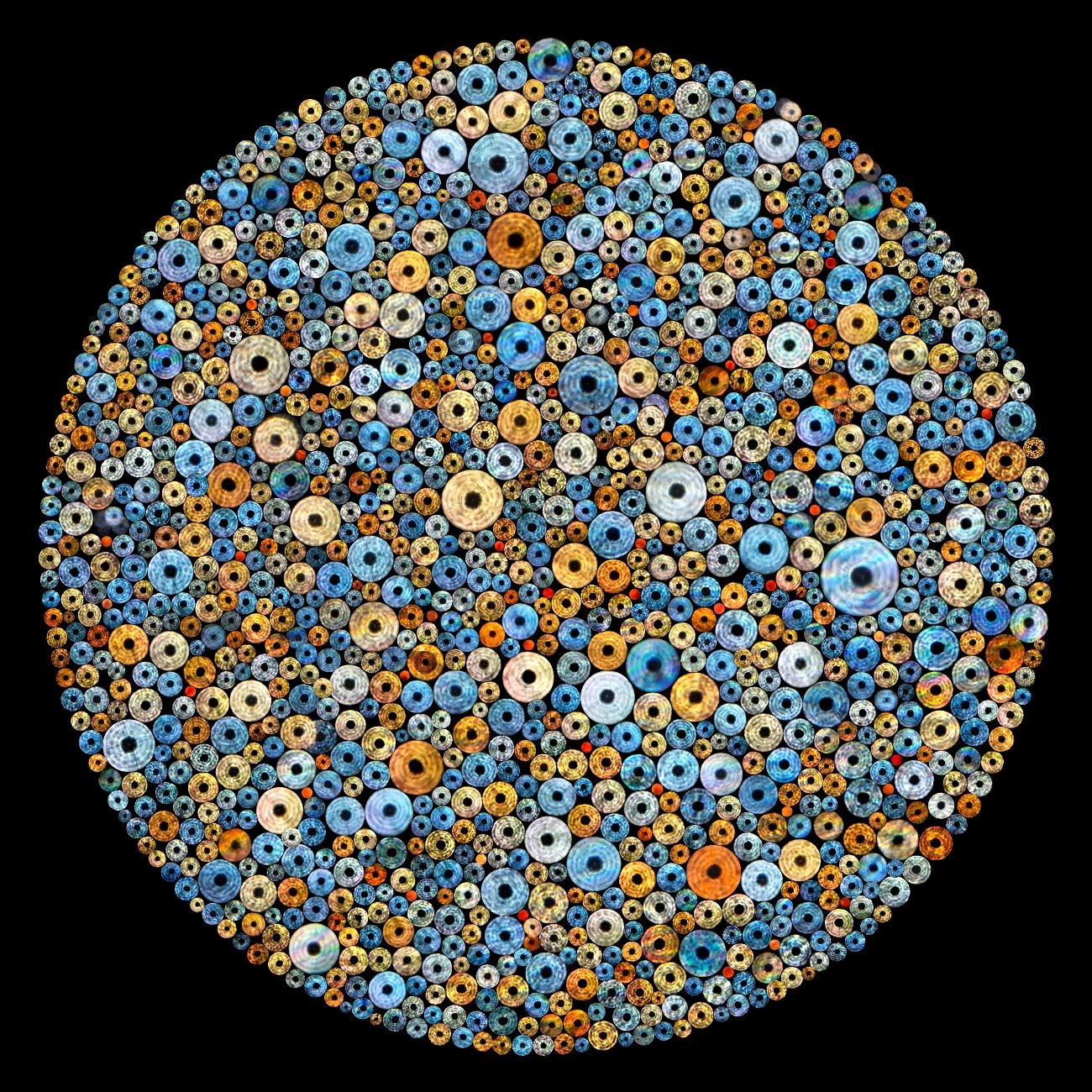EarthSky Community Photos
Submit your photo here. Comment or upvote on photo pages. Search via photographers' names. More improvements coming! To help, please donate.

Naples - Italy
Skywatcher dobson telescope 18" - Smartphone A5 - ISO800 - F1.9 - 1/11s
I changed the brightness and contrast of each star. With GIMP software.
In these last two years I have photographed with a smartphone all the stars up to magn. +5 visible from Naples (Italy) with my 18" dobson: about 1300 snaps! I have put every star out of focus to make their nuances clearer and finally I have made with them mosaics where in one glance we can see the colours of every constellation. These images all visible on my blog.
I have even made an unic collage with all these 1300 snaps! A colorful mosaic that I have named Kaleidocosmo, because as through a kaleidoscope it is possible to see countless transformations of colored shapes, so through this mosaic it is possible to catch at a single glance the innumerable shades of all the stars of the celestial vault visible to the naked eye!
In it there are 1250 snaps - 1269 stars if we also consider the multiple stars -, including almost all the ones within magnitude +5 visible from Italian latitudes and several others weaker but with beautiful scarlet shades, such as the famous carbon stars, stuck to each other in scale according to their apparent magnitude.
Kaleidocosmo can reveal how much the starry sky is definitely more colorful than we can imagine, so much so that it resembles an immense bunch of fragrant flowers or a casket full of precious stones.
Stars' colours are definitely visible already with naked eye, although most of them become visible or more brilliant through telescopes, they are the first visible trace of the different stellar spectrums, and are - almost - the only case in which the deep sky is truly "visible in colour".
Recently, through a simple kaleidoscope-effect to the image, I have made a video where Kaleidocosmo looks even more like a real kaleidoscope. And its colours, its shape and its rhythmic movements seem to synthesize the description that in ancient times was made of the starry sky, when its about 1000 stars were considered all fixed to the surface of the highest sphere of the cosmos and when according to Pythagoras, together with those of all the planets, like an immense musical instrument, that sphere played a heavenly harmony named Musica Universalis.
With this cosmic music, the orderly movements of the planets and of the stars were poetically defined as glorious rhythmic dances, as did Philo of Alexandria ( for example in his On the creation, XVII,54 ); and Plato, by observing the different colours of the brightest stars, described this last sphere of the cosmos as multicoloured ( de Republica, X, 616e ).
Then, through this new version of Kaleidocosmo, that ancient coloured rolling sphere of the fixed stars is now back to dance. It is still unrealesed.
You can see the video here: http://www.unsaltonelcielo.it/kaleidocosmo-la-danza-dell-ultimo-cielo/
Best regards
Paolo Palma








